What is cultural tourism and how to make it part of your trips
Learn all about cultural tourism and find out about amazing destinations to live cultural experiences around the world.
9min
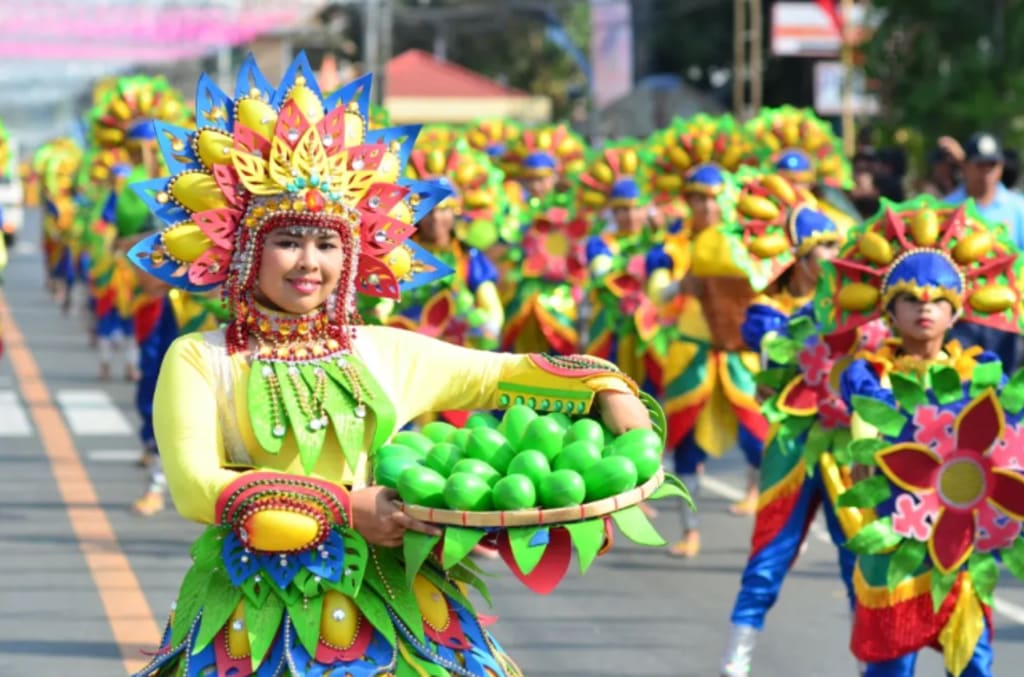
When you’re traveling, do you try to go beyond the surface and understand the different cultures that surround you? Then this article is for you. We will talk about the main characteristics of cultural tourism and will suggest 10 fascinating destinations with unique cultural aspects.
We will also tell you how you can have a deeper cultural immersion than a typical tourist, mixing with locals and learning from them while you get free accommodation.
You might also like to read:
What is cultural tourism?
Cultural tourism is a form of travel that focuses on exploring and appreciating the unique traditions, history, and practices of a place. It is not just about visiting museums or attending festivals, but also delving deeply into the everyday aspects of local life. Authentic local food, local markets, and even casual chats with locals are an integral part of cultural tourism.
While a conventional tourist may seek relaxation and fun and focuses on visiting famous tourist places, the cultural tourist seeks to go beyond the superficial layer. They want to immerse themselves in local history, explore the unique customs of a region, and learn about its art and architecture. This type of experience is an opportunity to grow personally and empathize with people from different parts of the world.
Among the different types of cultural tourism, there are gastronomic tourism, rural tourism, religious tourism, ethnographic tourism, sports tourism, spiritual tourism, and voluntourism, to name a few.

Characteristics of cultural tourism
A main characteristic of cultural tourism is the deep appreciation for different cultures. Travelers not only visit a place to see its natural or architectural beauties, but also to immerse themselves in its culture and understand it thoroughly.
Another important characteristic is the constant educational component that exists in this type of trip. You don't just learn about a new culture: you are also an active part of the cultural exchange while sharing your own customs and knowledge with local people.
Respect for cultural heritage is another indispensable condition for the cultural tourist, since not only the most famous tourist attractions are visited, but also places of great importance for local communities, such as natural sites with a strong mythology, ruins of ancient civilizations, or religious temples. They are spaces that house ancestral stories and traditions, which must be valued and preserved with the greatest care.
You might also be interested in: 5 actionable ways to live like a local while traveling
Importance of cultural tourism
Cultural tourism allows travelers to immerse themselves in the heart of a culture and learn about its history, customs, and traditions. But it's not just travelers who benefit from cultural tourism.
Local communities also have much to gain as this form of travel can be a powerful driver for local economic development. Income generated by tourism can be reinvested in community projects, helping improve infrastructure and boost local employment.
Role of the cultural traveler
When we embark on a cultural journey, we are much more than just passive spectators: we actively become respectful participants within these diverse communities. It is vital to understand that each culture has its own unique identity forged by centuries - sometimes millennia - of history.
As cultural travelers, our role is to learn and respect these differences. It is this open-mindedness that allows us to experience the intrinsic beauty of the varied ways in which humans interpret and express our existence.
Being a responsible tourist is central so that both parties can benefit from this exchange, since lack of respect or damage caused in the place visited can have irreparable consequences. Visiting a community with the sole objective of taking photos for social media, without being really interested in it, can ruin places in the long run.

10 places where you can practice cultural tourism
Cultural tourism can be practiced anywhere in the world since there are countless diverse cultures all around us. As you travel you will realize that there are many more than you thought, because even within the same country there can be dozens or even hundreds of ethnic groups with their own religion, beliefs, mythology, dialect, gastronomy and so on.
Below we will see some of the most favorable destinations for cultural tourism, but obviously the choice of where to go depends on your interests.
Kyoto, Japan
Kyoto is known as the cultural heart of Japan. With its intact Shinto shrines and ancient Buddhist temples – such as Kinkaku-ji (the Temple of the Golden Pavilion) – Kyoto offers travelers an authentic glimpse into Japan's imperial past.
Don't forget to participate in a tea ceremony and stroll through Gion, a famous geisha neighborhood full of traditional houses where the maiko learn what is necessary to become geishas.
Keep reading about Japan:
- Japan off the beaten path: discover 6 unique non-touristy destinations
- Japan on a budget: live like a local and save your dollars
- How to teach English in Japan: the easiest way

Ubud, Bali, Indonesia
Ubud is the cultural heart of Bali and a must-see destination for travelers looking to immerse themselves in the rich history and traditions of this mythical Indonesian island. This small town is surrounded by terraced rice fields, lush tropical forests and centuries-old Hindu temples that look like something straight out of a postcard.
Unlike the tourist bustle of Kuta, Canggu or Seminyak, Ubud offers a more authentic and immersive experience when exploring its surroundings. Here you can learn about Balinese customs, participate in craft workshops, or attend local cooking classes. In addition, its vibrant art scene will allow you to discover everything from traditional dances to contemporary art.

Dharamsala, India
Located in the northern region of India, Dharamsala is known for being the residence of the Dalai Lama and the center of the Tibetan government in exile. Here you can visit the Dalai Lama temple, where you can witness Buddhist ceremonies and better understand this ancient tradition.
Aside from its rich religious heritage, you will also find a fascinating mix of Indian cultures and Tibetan influences that are reflected in both local customs and cuisine. You can enjoy typical dishes such as momos (dumplings) or thukpa (a noodle soup), while interacting with the friendly locals.
Another must-see attraction is the Dhauladhar mountains that surround Dharamshala; perfect for those adventurers interested in hiking while enjoying spectacular panoramic views. There is also the unique opportunity to learn about traditional Ayurvedic medicine through educational workshops offered by local experts.
Keep reading: Discover India's top 3 best ecotourism destinations

Marrakesh, Morocco
Marrakech, in Morocco, is famous for its medina or old town, declared a World Heritage Site by UNESCO. Here you can explore labyrinths of narrow alleys filled with colorful bazaars where local artisans sell their wares.
A visit to the imposing Bahia Palace or the Saadian tombs will transport you directly to Morocco's glorious past: it’s an impressive experience of cultural tourism.
You cannot miss the opportunity to try authentic Moroccan dishes, such as couscous or a delicious tagine while enjoying the lively and hypnotizing atmosphere in Jemaa el-Fna, one of the largest and busiest markets in the world.
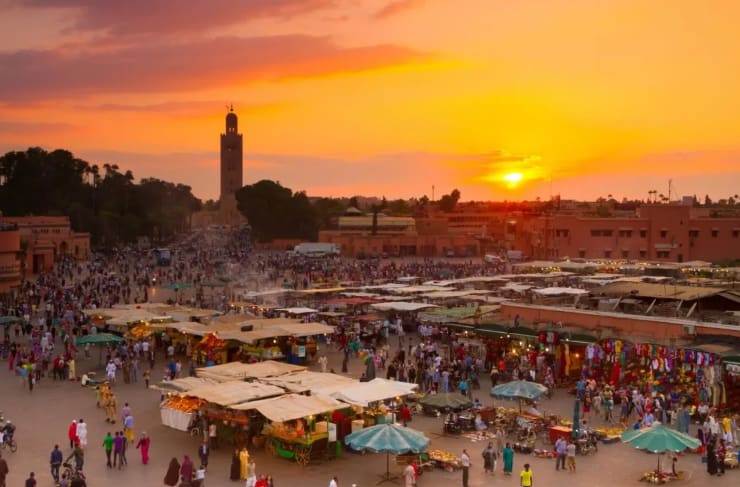
Istanbul, Turkey
Istanbul is an ideal destination for cultural tourism. This magical city is located at the crossroads between Europe and Asia, giving it a unique mix of Eastern and Western influences.
Its ancient history has left tangible traces that you can explore during your visit. From architectural wonders such as the Blue Mosque, the Topkapi Palace or the majestic Hagia Sophia to its bustling bazaars full of colors, aromas, and unique flavors.
Turkish culture has a lot to offer: its rich gastronomy with emblematic dishes such as kebab or baklava; its impressive ancestral religious traditions such as that of the dancing dervishes; and its palpable modernity in vibrant neighborhoods like Beyoğlu where contemporary art galleries coexist with bohemian cafes.
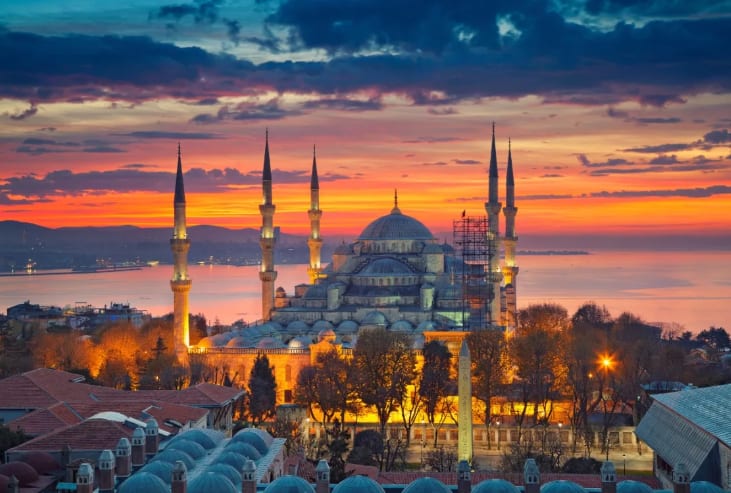
Rome, Italy
Rome, the "Eternal City", is a living museum. From the Colosseum to the Vatican, every corner tells a fascinating story about ancient Roman civilization and its impact on our society today, making it a classic destination for cultural tourism.
You can tour the ancient ruins of the Roman Forum and admire masterpieces of Renaissance art at the Vatican Museums. Every step through Rome allows you to immerse yourself deeply in its vibrant culture and rich history.
Keep reading: The 20 best places to visit in Italy
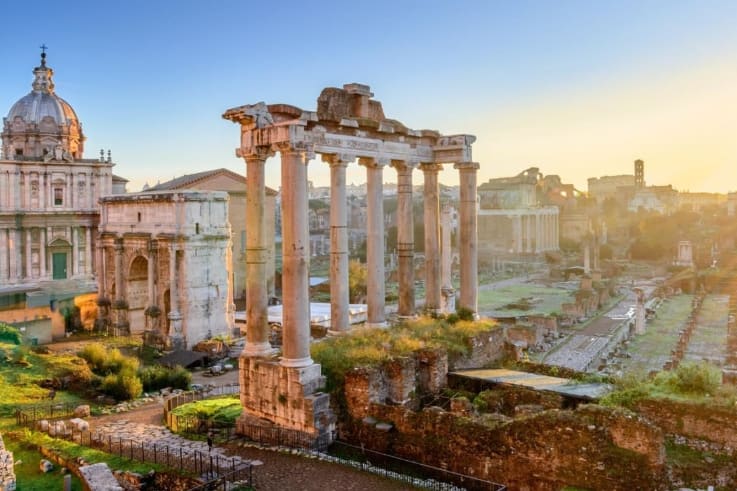
Granada, Spain
Known for its stunning Moorish architecture and charming cobblestone streets, Granada is another perfect destination for travelers looking to have a cultural tourism experience in Europe.
This Andalusian city, in the South of Spain, lies at the foot of the Sierra Nevada mountains and offers a unique mix of Moorish and Christian influences.
The Alhambra, a jewel of Islamic art with its intricate mosaics and hanging gardens, is its main tourist attraction, but there is much more in Granada. The UNESCO World Heritage neighborhood of Albayzín is full of winding streets where you can browse local shops or simply enjoy the panoramic views from one of the many viewpoints.
You also can't miss Sacromonte, famous for its gypsy caves converted into houses and even flamenco bars. Here you can experience an authentic flamenco night, full of the passionate rhythm that characterizes this traditional dance from southern Spain.
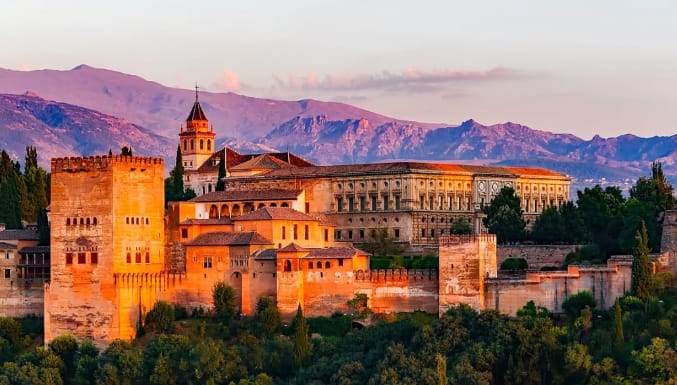
Salvador de Bahia, Brazil
Salvador is the capital of the state of Bahia and the fourth most populated city in Brazil. Founded in 1549 by the Portuguese, it was the most important center in the slave market, which over time led to an artistic culture where African expressions mixed with European and Indigenous influences.
No wonder it is one of the country’s most popular tourist destinations: it combines beautiful beaches with history, festivals, and traditions, being considered the cultural capital of Brazil.
Pelourinho is the old neighborhood of Salvador de Bahía, declared a World Heritage Site. Its cobbled streets are full of historical sites, colonial architecture, museums, restaurants, bars, hotels, musicians, and capoeira.
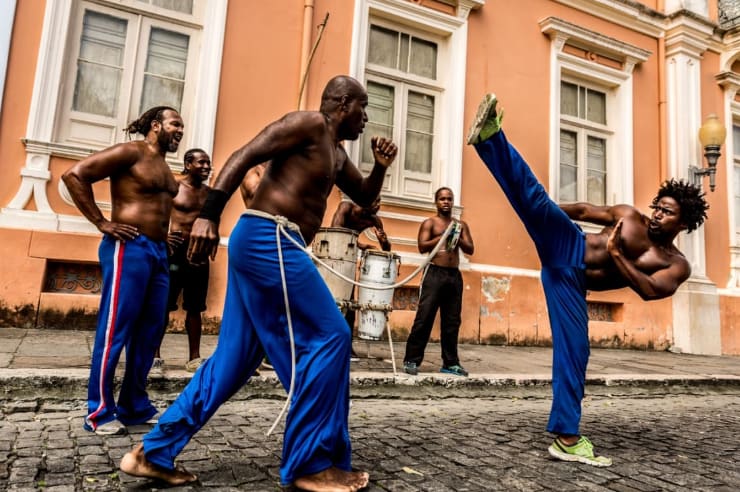
Cusco, Peru
The charm of Cusco, Peru, lies in its rich history and culture that have survived through time. This ancient Peruvian city is another perfect destination for travelers interested in cultural tourism in South America.
As the cradle of the Inca Empire, Cusco offers an unmatched experience. Here you can explore ancient Inca ruins such as the famous citadel of Machu Picchu, a must-see for any history and archeology lover.
You can also visit other historical sites such as Sacsayhuamán or Pisac. And if you are looking to immerse yourself even more in the local culture, there is nothing better than trying the exquisite Andean cuisine and participating in its colorful traditional festivals.
In addition to being a living museum full of archaeological treasures, Cusco is also known for its vibrant nightlife with numerous bars and clubs where you can enjoy folk music while mingling with locals and other international travelers.

Guadalajara, Mexico
This vibrant city, known as the birthplace of mariachi, is full of history, traditions and art that reflect the richness of Mexican culture. You can stroll through the local squares where mariachi groups perform regularly or visit the famous Degollado Theater during one of its nightly shows.
But the cultural wealth of Guadalajara goes far beyond mariachi. The towns near this metropolis are famous for their impressive craft production. Tlaquepaque and Tonalá are two perfect examples: these places are full of workshops where you can watch artists work with clay, blown glass, and other ancient techniques to create wonderfully detailed pieces.
Guadalajara also offers a wealth of cultural and historical museums, as well as well-preserved colonial buildings that tell the history of Mexico. You cannot miss visiting the Hospicio Cabañas, an architectural jewel from the 19th century and a UNESCO World Cultural Heritage Site.
In addition, the city is surrounded by agave plantations, the plant that is used to produce tequila and mezcal.
You might also like: Ultimate list of the best places to visit in Mexico: the top 13
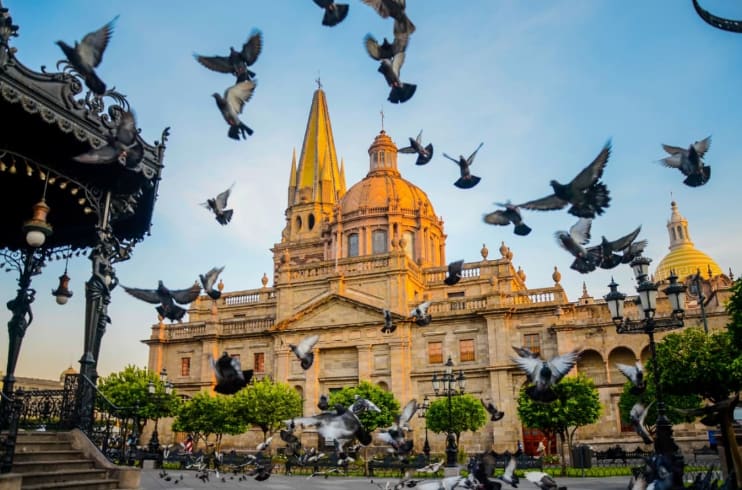
Discover different cultures with Worldpackers
An excellent way to have a true cultural immersion in the places you travel is by volunteering through Worldpackers. This platform facilitates an exchange of work for accommodation which allows for transformative and budget-friendly trips.
It’s quite simple: you lend a hand in different projects for a few hours a day, and in return you get free accommodation on site. Depending on the host, you might also get other benefits such as free meals and activities.
This type of trip is super cheap, but that’s not the best part. Volunteering with Worldpackers you can meet many people with similar interests to yours and develop new skills, such as learning a language, bartending, or bioconstruction.
From hostels in big cities to organic farms and holistic centers surrounded by nature, the possibilities are plenty. There are positions available in all of the countries mentioned in this article and much more: there are more than 140 countries available on the platform.
Keep reading:
- Collaborative tourism: what are collaborative travel relationships?
- 6 types of volunteer work abroad that give you free accommodation
- How to find volunteering opportunities around the world using Worldpackers

Did that spike your interest? Create a free profile on Worldpackers and start saving your favorite volunteering positions. And if you liked these tips on how to practice cultural tourism around the world, let us know in the comments section below!












Rachel
Jan 08, 2024
Great trip!